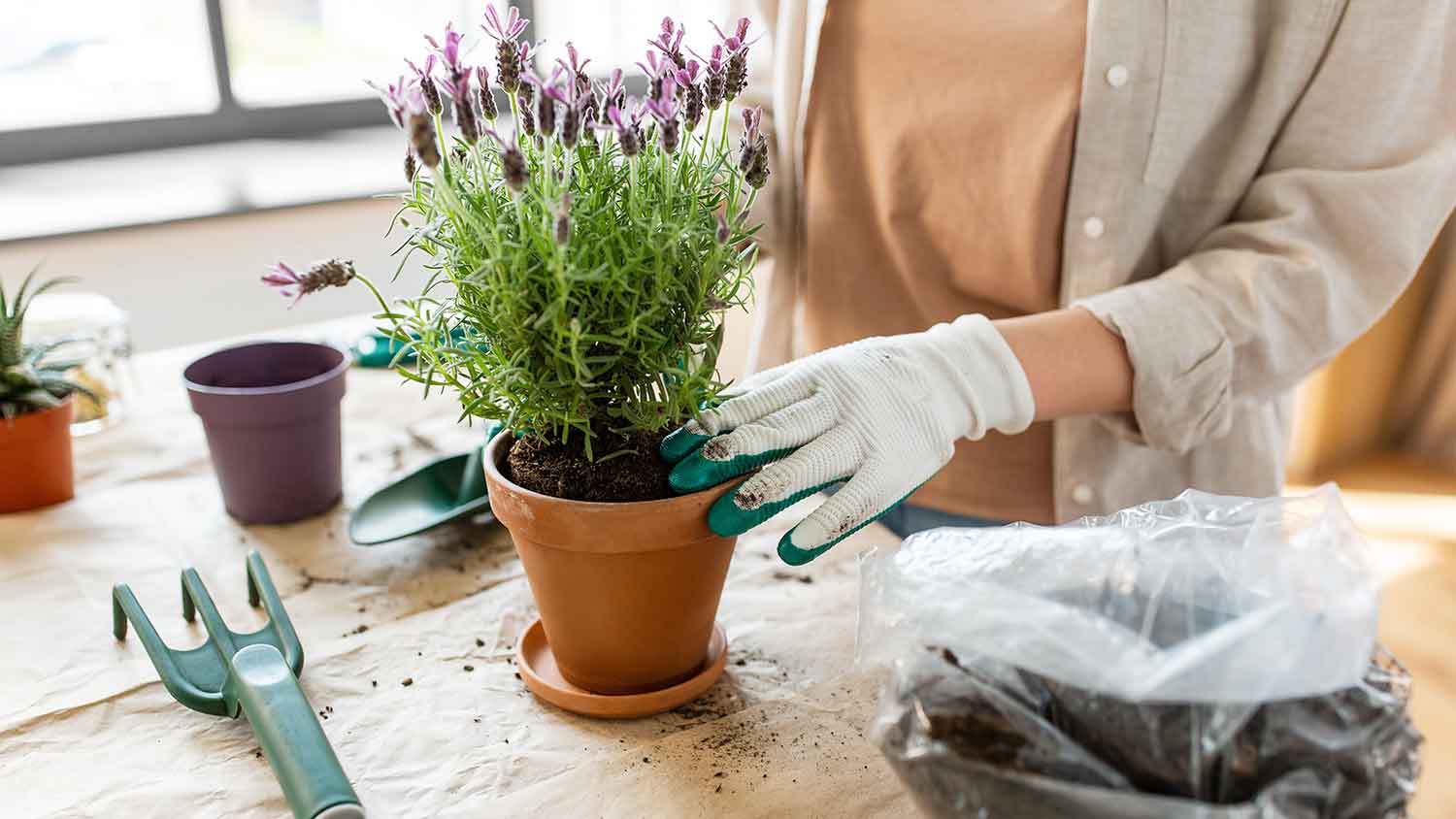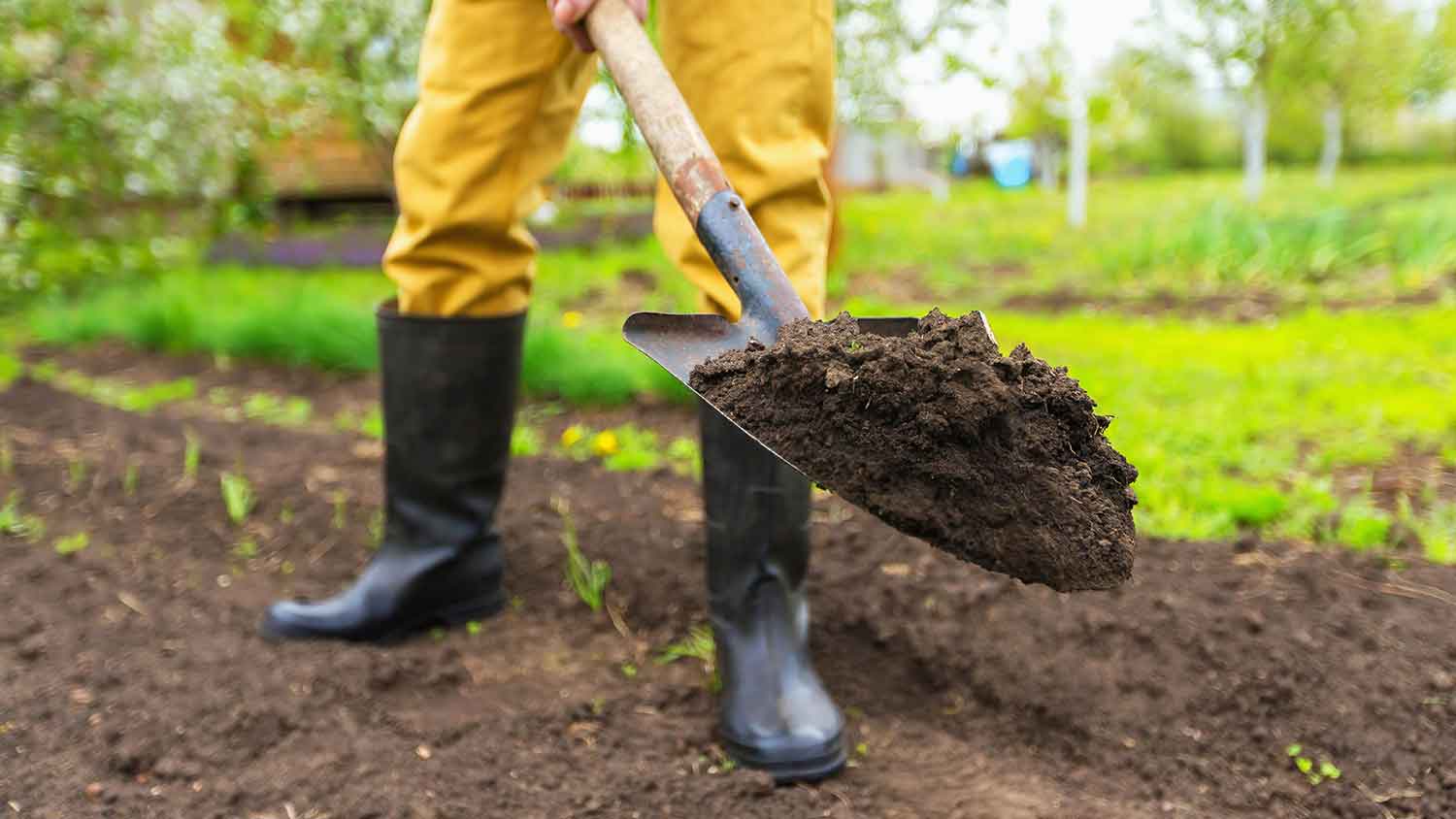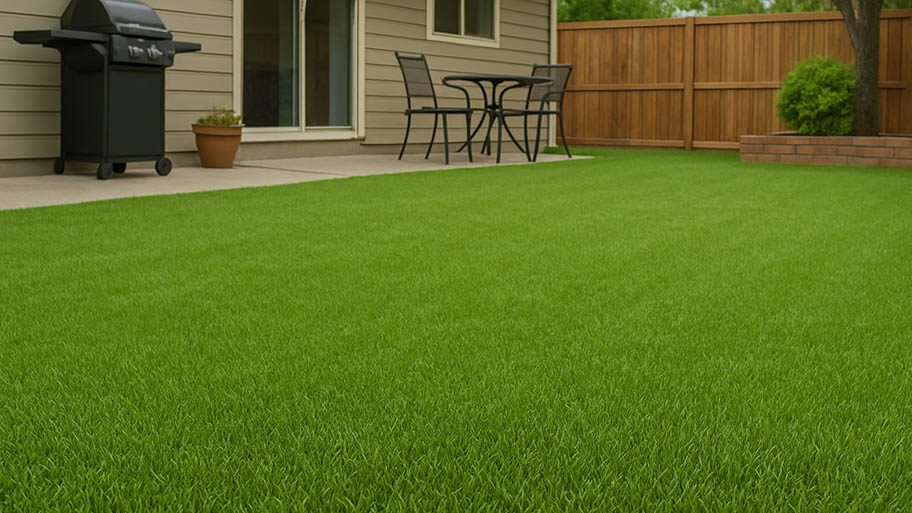
Your total lawn care cost depends on several factors, including the type of service and lawn size. Our guide will cover what you can expect to pay for lawn care.
Settle the debate between potting soil and topsoil


Topsoil is natural soil without added nutrients.
Potting soil is a mix of components that keep potted plants healthy.
When planting grass, topsoil is often the right choice.
There are dozens of soil options at your local gardening center. If you’re replanting your lawn or adding grasses to your garden, you may struggle to narrow your choices between potting soil vs. topsoil. When planting grass, most of the time, you’ll opt for topsoil. In a pinch and in rare cases, potting soil may work, but you should consult a lawn care expert before planting. Here are the differences between potting soil and topsoil for grass.
As its name implies, potting soil works for growing plants in pots and smaller containers. It’s more common in indoor planting, while gardeners solely use topsoil for growing plants in the ground. Since you plant most grass varieties in the ground, topsoil is often the go-to choice. If you’re struggling to understand best gardening practices, a lawn care expert near you can help.

Fun fact: Potting soil is not soil in the same sense as topsoil. Rather, it’s composed of pine bark, peat moss, perlite, and vermiculite. This combination of nutrients helps prevent plant disease and keeps plants grown in containers healthy.
For plants growing in indoor pots or in small containers outside, potting soil has many disadvantages. That said, it’s not the right soil for every situation.
| Pros | Cons |
|---|---|
| Nutrient-rich | Not suitable for ground planting |
| Helps retain water | Many don’t contain actual soil |
| Lightweight soil | Not ideal for large raised beds |
| Helps container plants grow |
Best for:
Planting indoors
Small containers without direct contact with the ground
Potting soil is best for pots and small containers. Unfortunately, you can’t use potting soil to grow grass in the ground. If your grass or plants aren’t coming into contact with the ground and naturally occurring soils, potting soil is the right choice. It combines different naturally occurring materials and added nutrients to keep plants healthy.
You can find potting soil at any gardening center, and it’s nice and light compared to other heavy soils. This compound also helps retain water so your plants get the water they need.
You shouldn’t use potting soil to grow grass in the ground. If you’re planting ornamental grass in small containers, potting soil may work, but few grass varieties can stand container planting. Despite having soil in its name, some potting soils don’t contain naturally occurring soil, so it’s not meant for lawn and garden bed use.

Topsoil is the soil on the first layer of the ground. It’s typically the first few inches of dirt in your yard. It contains many of the nutrients plants need to survive. Topsoil is naturally made and doesn’t have added nutrients, which is why it’s the top choice but growing grass in the ground.
| Pros | Cons |
|---|---|
| Naturally occurring soil | May contain weeds |
| Cheap to buy | Not meant for indoor planting or containers |
| Ideal for planting in the ground | May need to add additional nutrients for certain plants |
| Easily add to existing soil |
Best for:
In-ground planting
Most raised beds
Most plant varieties
Topsoil is a naturally occurring soil that contains nutrients you find in nature. As one of the more affordable soils, it’s ideal for covering large spaces like your lawn or large garden beds.
Since it’s the top layer of soil in most yards, you can add topsoil you buy from landscaping companies or gardening centers directly over soil already there. This step adds to the ease of planting.
Topsoil has few drawbacks, most of which have to do with it being naturally occurring. For example, the topsoil found at gardening centers may have weeds mixed in since it was likely harvested from various places. Topsoil isn’t the right soil for indoor planting since many of those plants need additives to sustain healthy growth.
When planting grass, topsoil is the overall winner. Potting soil has a very specific use: pots and other containers. It’s designed to keep container plants healthy with added nutrients and water-retaining features.
If you plant potting soil outside, it won’t hold up well to the elements. Topsoil is naturally occurring so it’s meant to withstand daily conditions. While topsoil will erode eventually, you can easily replace it.
The price of potting soil per bag or unit is higher than the cost of topsoil. The increased price is due to the number of added nutrients and materials in potting soil.
You can purchase potting soil made completely of natural materials, but these are often more expensive. On the other hand, topsoil always comes from naturally-made materials. While some brands may be better depending on where the soil is harvested, it’s the better option for healthy plants you’re growing in the ground.
From average costs to expert advice, get all the answers you need to get your job done.

Your total lawn care cost depends on several factors, including the type of service and lawn size. Our guide will cover what you can expect to pay for lawn care.

Removing an old lawn is often necessary to plant new grass or build a new outdoor structure. Find out what to budget for your lawn removal cost.

Artificial grass is a low-maintenance alternative to traditional turf. Learn how much artificial grass installation costs and what affects your price.

Will grass seed germinate on top of soil? Yes, and it’s the ideal way to start a new lawn. Find out how (and why) to plant grass seeds on top of soil.

Properly identifying weeds is essential for keeping them under control. Learn about the most common types of weeds in grass and how to get rid of them.

Whether you're opting for a lawn alternative or looking to rejuvenate your turf, check out these five options to remove grass from your lawn.